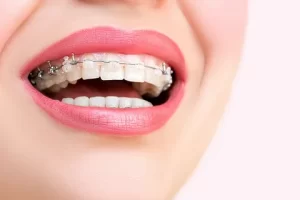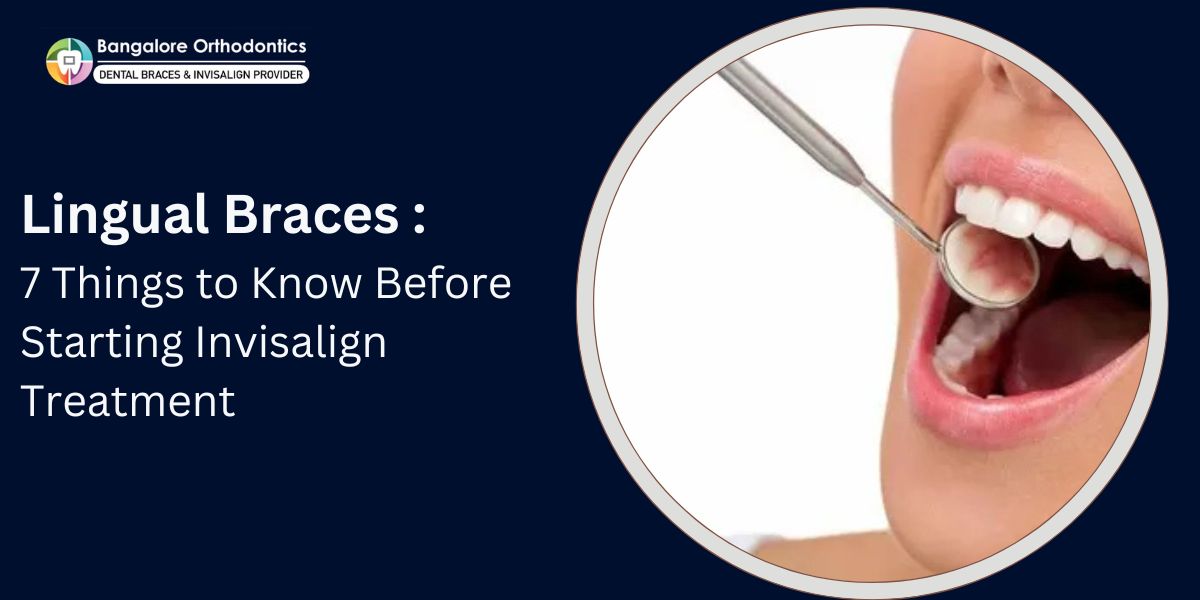In orthodontics, Invisalign has pioneered a nearly invisible method of straightening teeth. However, if you’re considering this modern treatment, it’s important to understand what to expect before starting your journey to a perfect smile. Here are the top seven things you need to know before diving into Invisalign treatment.

1. How Invisalign Works
Invisalign uses a series of custom-made, transparent plastic aligners that gradually move your teeth into their desired positions. The aligners are crafted using 3D imaging technology, which maps out the entire treatments plan from start to finish. Unlike traditional braces that use metal brackets and wires, Invisalign aligners are smooth and comfortable, designed to fit snugly over your teeth.
Your teeth will shift slightly with each set of aligners, which you’ll typically change every one to two weeks. The frequency of switching aligners may vary based on the complexity of your case and your orthodontist’s recommendations.
2. Treatment Duration Varies
The duration of Invisalign treatment can range from a few months to two years, depending on the complexity of your dental issues. Simple cases, such as minor crowding or spacing, may only require around six months of treatment. On the other hand, more complex cases involving significant misalignment or bite issues could take closer to 18 to 24 months.
Your orthodontist will provide a customized treatment plan that includes a timeline. It’s important to follow their instructions diligently, as deviating from the plan could extend the treatment duration.
3. Wearing Your Aligners for 22 Hours a Day is Key
For the treatment to be effective, you must wear your Invisalign aligners for 20-22 hours daily. While the aligners can be removed while eating or drinking anything other than water, you’ll need to stay disciplined to ensure they stay on track.
Failing to wear the aligners as prescribed can delay your progress and may require additional aligners, which could increase the overall cost and duration of the treatment. If you struggle with compliance, you might want to discuss options like Invisalign attachments with your orthodontist.
4.Check-ups are Still Required
Even though Invisalign doesn’t require frequent clinic visits like braces, you’ll still need check-ups with your orthodontist. These appointments, typically every 6-8 weeks, are important for monitoring progress and making any necessary adjustments. Your orthodontist will assess if the aligners are fitting properly and if your teeth are moving as planned.
These visits are also an opportunity to receive new sets of aligners and discuss any issues you may be facing, such as discomfort or difficulties keeping the aligners clean.

5. Discomfort is Normal at the Beginning
Invisalign treatment is known for being more comfortable than traditional braces. However, it’s not entirely pain-free. When you switch to a new set of aligners, you might feel some pressure or discomfort as your teeth start to move. This sensation usually lasts for a few days and then subsides.
The discomfort can be managed by taking over-the-counter pain relievers if necessary. Drinking cold water or using orthodontic wax on any sharp edges can also help reduce irritation. Remember, experiencing some discomfort means that the aligners are doing their job!
6. You’ll Need to Clean Your Aligners Regularly
Maintaining good oral hygiene is essential when undergoing Invisalign treatment. Since the aligners cover your teeth, it’s important to brush and floss your teeth thoroughly before putting them back in after eating. Failing to do so can trap food particles and bacteria against your teeth, leading to plaque buildup, cavities, or bad breath.
The aligners themselves should be cleaned daily using a soft-bristled toothbrush and clear, anti-bacterial soap. Avoid using toothpaste, as it can scratch the aligners and cause them to appear cloudy. You may also use specialized cleaning crystals or soaking solutions recommended by your orthodontist.
7. Invisalign May Not Be Suitable for Everyone
While Invisalign is highly effective for many orthodontic cases, it may not be suitable for everyone. Severe dental issues, such as extreme overbites, underbites, or significant jaw misalignment, might require traditional braces or other orthodontic treatments. Additionally, if you have certain dental conditions, such as untreated cavities or gum disease, these need to be addressed before beginning Invisalign treatment.
An orthodontic consultation is necessary to determine whether you’re a good candidate for Invisalign. Your orthodontist will evaluate your dental health, discuss your treatment goals, and outline the most appropriate treatment plan for you.

Final Words
Invisalign offers a convenient and discreet way to achieve a straighter smile, but it requires commitment and a good understanding of the process. By knowing these top seven things before starting Invisalign, you’ll be better prepared for what to expect and how to optimize your treatment.
If you’re considering Invisalign treatment, choosing it under the guidance of a seasoned expert like Dr. Divyashree Rajendra can make all the difference. Dr. Divyashree is one of the leading Invisalign providers in Bangalore, and she is known for her extensive international training and expertise in this innovative technology. With over 17 years of experience in orthodontics, Dr. Divyashree specializes in treating patients with braces and aligners. As a KOL Faculty for Align India, she provides training and mentorship to other orthodontists in clear aligner systems.
In addition, she has played a significant role in advancing the use of clear aligners in orthodontics as a Key Opinion Leader and Clinical Speaker for Invisalign India. At Bangalore Orthodontics, Dr. Divyashree Rajendra aims to create beautiful, confident, and healthy smiles that last a lifetime.
Contact Us today to determine the best course of treatment for your smile!

